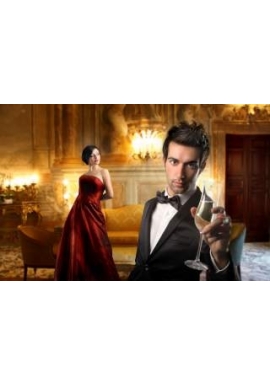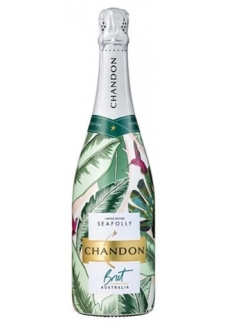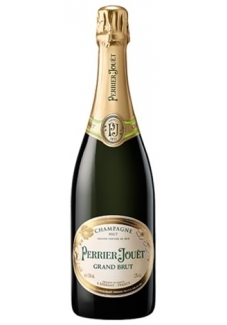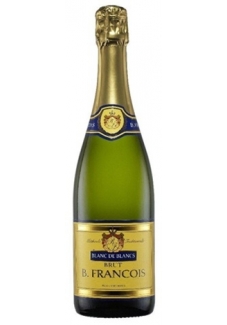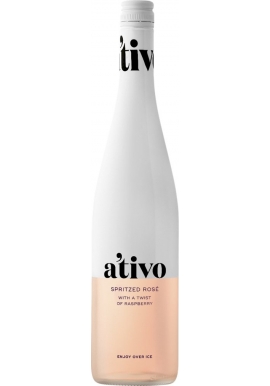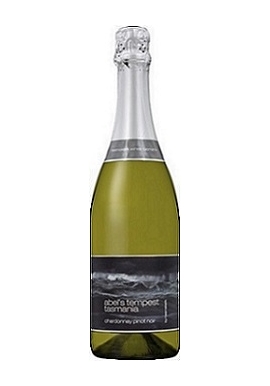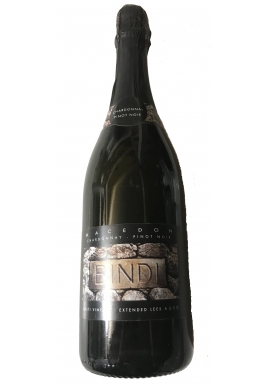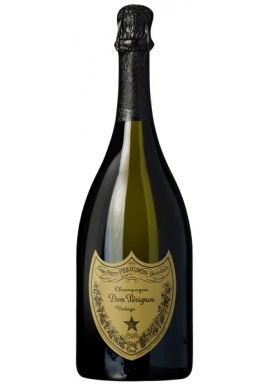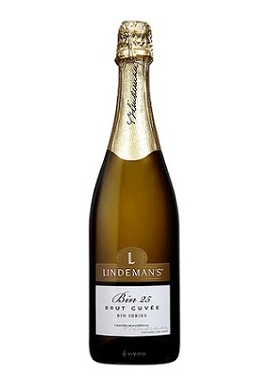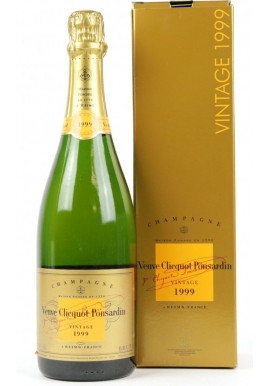CHAMPAGNES ~ SPARKLING
-
AUSTRALIAN SPARKLING
- Sparkling Blanc de Blancs
- Sparkling Blanc de Noirs
- Sparkling Brut
- Sparkling Brut Reserve
- Sparkling Burgundy
- Sparkling Cabernet
- Sparkling Cabernet Shiraz
- Sparkling Chambourcin
- Sparkling Chardonnay
- Sparkling Cuvee
- Sparkling Cuvee Brut
- Sparkling Frontignac
- Sparkling Merlot
- Sparkling Moscato
- Sparkling NV~Non Vintage
- Sparkling Pinot Meunier
- Sparkling Pinot Noir
- Sparkling Pinot Chardonnay
- Sparkling Pinot Shiraz
- Sparkling Prosecco
- Sparkling Reds
- Sparkling Rose
- Sparkling Saperavi
- Sparkling Shiraz
- Sparkling Shiraz Durif
- Sparkling Vintage Brut
- FRENCH CHAMPAGNES
- IMPORTED SPARKLING
Of the great wines of France, Champagne is the newest arrival. Champagne as a district has been making wine since the early Roman times, and by the ninth century it had become sufficiently well established as a high quality region for distinction to be drawn between the wines of the Vallee de la Marne and those of the Montagne de Reims. From thi...
Of the great wines of France, Champagne is the newest arrival. Champagne as a district has been making wine since the early Roman times, and by the ninth century it had become sufficiently well established as a high quality region for distinction to be drawn between the wines of the Vallee de la Marne and those of the Montagne de Reims. From this time on it went from strength to strength: by the early sixteenth century, the wine of Ay had become so highly prized that it was said to be 'the ordinary drink of Kings and Princes. It was not until the seventeenth century, however, that the first sparkling wines made their appearance, and not until the nineteenth century that Champagne came to be synonymous with sparkling wine. neither were the numerous special techniques essential for making Champagne all discovered by discovered by one person - notwithstanding the extraordinary feats popularly attributed to Dom Perignon nor at any one time.
The evolution of the present day method of making clear sparkling wine using the second fermentation took over 200 years. Champagne is a wine that appeals to the broadest senses, rather than to the particular. It is the overall impression it leaves in the mouth after it is swallowed which matters most .It is true that the greatest Champagnes are wines of extraordinary finesse, balance, and above all else length of flavours, the intrinsic quality of these wines is on a par with the greatest of the still white or red table wines. Just as the Burgundians place special emphasis on the bouquet, the Bordelais on the palate and structure, so the Champenois claim the finish and, in particular, the aftertaste as a special feature of their wine. Not that all Champagnes taste the same, there is a world of difference between a Pol Roger and a Krug,a Taittinger and Bollinger, let a alone between a vintage Champagne of one of the grandes marques and a non vintage, "buyer's own brand" from one of the cooperatives. Yet the overall consistency of the quality and style and non - vintage Champagne from the grandes marques exceeds that of any other category of wine in any region - an astonishing achievement, given the marginal climate in which the Champenois grow their their grapes, and the fluctuations in supply and demand which they so skilfully manage from making viewpoints.
CHAMPAGNES ~ SPARKLING There are 7 products.
Subcategories
-
AUSTRALIAN SPARKLING
The best Australian sparkling wines are being made increasingly from cold climate grapes grown in Tasmania and high altitude and or southerly parts of Victoria. These wines often stand stand comparison with good non vintage Champagne, albeit with a decidedly Australian character.
The importance of the right varietal base (Chardonnay, Pinot Noir, and less importantly Pinot Meunier) has been handsomely demonstrated in Australia.Australian sparkling wines have gone through several phases of development. Increasingly, the finest sparkling wines are made from Tasmanian grapes, with Macedon, the Yarra Valley, from Victoria and Adelaide Hills from South Australia other super - premium sources.
Domaine Chandon in the Yarra valley shares with Moet & Chandon a wine style with a style which emphasises mid palate softness without compromising a crisp, clean, and long finish. Its methods of achieving this have evolved and changed over fifteen years, as have the sources of its grapes.
As a consequence of targeting even cooler regions than the Yarra Valley including Tasmania, the high Strathbogie Ranges,and the Upper Yarra, a weighted average of thirty per cent of the base wines are taken through malolactic fermentation, with pinot Noir to the fore.Care is now taken to avoid bronze colouring in the key cuvees, which are brighter straw yellow.
Australian sparkling red wine is an Australian speciality and is altogether different, though no less enjoyable, than a sparkling white. Italian lambrusco is of similar style, but unlike Australian red sparkling wine, uses no oak.
First a good quality dry red is made in the same way as table wine. The wine is matured for a time in oak casks and, with the balance of flavours achieved, red wine is sent off to the sparkling winemaker to be turned into fizz.
The wine is allowed to mature further on less in the bottle and, once the lees are disgorged, the wine is topped up with dosage of sugar and wine to create a more complex character and palate feel.
Having retained some tannins during manufacture and often having a slightly higher alcohol content content than sparkling white wines, sparkling reds can keep quite well and can mature further after release onto the market.
Again it is a style best drunk young and chilled. Australian sparkling red wine is well worth experimenting with at the table as it is a good accompaniment to a wide range of meat dishes, hot and cold and in particular it is a good choice of poultry dishes.
-
FRENCH CHAMPAGNES
The evolution of the present day method of making clear sparkling wine using the second fermentation took over 200 years. Champagne is a wine that appeals to the broadest senses, rather than to the particular. It is the overall impression it leaves in the mouth after it is swallowed which matters most .It is true that the greatest Champagnes are wines of extraordinary finesse, balance, and above all else length of flavours, the intrinsic quality of these wines is on a par with the greatest of the still white or red table wines. Just as the Burgundians place special emphasis on the bouquet, the Bordelais on the palate and structure, so the Champenois claim the finish and, in particular, the aftertaste as a special feature of their wine. Not that all Champagnes taste the same, there is a world of difference between a Pol Roger and a Krug,a Taittinger and Bollinger, let a alone between a vintage Champagne of one of the grandes marques and a non vintage, "buyer's own brand" from one of the cooperatives. Yet the overall consistency of the quality and style and non - vintage Champagne from the grandes marques exceeds that of any other category of wine in any region - an astonishing achievement, given the marginal climate in which the Champenois grow their their grapes, and the fluctuations in supply and demand which they so skilfully manage from making viewpoints. Assemblage known as blending is the most critical stage of the long and delicate process which makes the finished Champagne. It is the art that made Dom Perignon the most famous oenologist of his day, indeed, perhaps the famous winemaker in history. Blending involves a detailed knowledge of the past, present, and future of the materials, and requires highly specialized tasting skills which can see beyond the often hard, acidic, thin, and chalky base wines that give only a barest glimpse of how they will taste once they have been blended, undergone the second fermentation, benefited from contact with yeasts during years of maturation on the lees, and been adjusted for sweetness using liqueur d'expedition. The task demands the mental skill of a chess grand master as literally endless permutations and combinations are considered. The blenders at Moet & Chandon typically have 300 different base wines from any one vintage to deal with the possible permutations are beyond calculation. one of the most fascinating, and important aspects of Champagne is the use of "reserve" wine held from earlier vintages. It may be held in magnums under slight gaseous pressure, in stainless steel, or less commonly in oak. Champagne house's such as Krug have reserve wine of up to twenty years old, although in diminishing quantity with age. They will usually be held over from vintage years,and,tasted on their own, can be superb. reserve wines can be used at three stages in the making of Champagne. They can be incorporated in the primary ferment, then most commonly and importantly at the time of blending or assemblage along with the liqueur de tirage, and least importantly because of the tiny volume with the liqueur d'expedition . All the Champagne houses privately acknowledge that the quality and style of their reserve wines have a powerful influence on their overall house style, but tend to downplay this importance publicly. Vintage champagne is strictly directed under European Union legislation, eighty five percent of the wine must be from the stated vintage year, which would allow generous incorporation of reserve wine. Under the appellation controlee of Champagne, the wine must be one hundred percent from its stated vintage. So reserve wines are customarily used in the blending of vintage Champagne - and to its great benefit-just as much as with non-vintage wines. The Champenois and the Comite Interprofessionel du Vin de Champagne are ever alert to emphasize their unique combination of terrior and climate. Champagne is France's northern most vineyard region. Without the special properties of its chalk soil, free - draining and sun reflecting, it would be a very doubtful area for ripening grapes. At Chancellors Cellars we have assembled an extensive range of famous Champagnes and Sparkling Wines for you to select.
-
IMPORTED SPARKLING
With the increased competition of great value imported sparkling wines from around the world, nothing quite matches the sparkle and sensation of fine bubbles dancing across the tongue. However, not everyone can drink Champagne on a regular basis. So imported sparkling wines of quality become available from the elegant Cava from Penedes in Spain, the rich yet delicate Cremant d’Alsace from France, and the deliciously fresh Prosecco wines of Northern Italy to name a few.
So what is the key element in Imported Sparkling wine making it so popular – well it has to do with the wine which has significant levels of carbon dioxide in it, making it fizzy. The best known example of a sparkling wine is champagne, which is exclusively produced in the Champagne region of France. Also in Italy there are many styles of sparkling wines like Franciacorta, Prosecco. Usually sparkling wine is white or rose but there are examples of red sparkling wines such as the Italian Brachetto, the Italian Bonarda, Australian sparkling Shiraz, and Azerbaijani "Pearl of Azerbaijan" made from Madrasa grapes. The sweetness of sparkling wine can range from very dry "brut" styles to sweeter "doux" varieties (from the French words for 'raw' and 'sweet', respectively).[
The sparkling quality of these wines comes from its carbon dioxide content and may be the result of natural second stage fermentation, either in a bottle, as with the traditional method, in a large tank designed to withstand the pressures involved (as in the Charmat process), or as a result of simple carbon dioxide injection in some cheaper sparkling wines.
In most countries the word "champagne" is reserved only for the specific type of sparkling wine from the Champagne region of France. The French terms "Mousseux" or "Crémant" are used to refer to sparkling wine not made in the Champagne region, such as Blanquette de Limoux produced in Southern France. Imported Sparkling wines are also produced in other regions of France as well as other countries around the world.
These imported sparkling wines are often referred to by their local name or region, such as Espumante from Portugal, Cava from Spain, Franciacorta, Trento DOC,Oltrepo Pavese Metodo Classico and Asti from Italy (the generic Italian term for sparkling wine being Spumante) and Cap Classique from South Africa. Imported Sparkling wines have also been produced in Central and Eastern Europe since the early 19th-century.
"Champagne" was further popularised in the region, late in the century, when Joszef Torley started production in Hungary using French methods, learned as an apprentice in Reims.Torley has since become one of the largest European producers of sparkling wine. The United States is also a significant producer of sparkling wine today, with producers in numerous states. Recently production of sparkling wine have started in the United Kingdom again, after a long hiatus since some of the earliest examples of sparkling wine was produced there.
-
$135.95
A'Tivo Rose NV Sparkling 750ml x 6 A'Tivo Rose NV Sparkling...
A’tivo is the refreshing new Australian aperitif, perfectly crafted to be enjoyed over ice. A'Tivo Rose is light and refreshing and softly spritzed. A’tivo Spritzed Rosé has a refreshing raspberry infusion. A’tivo Rose is perfect for enjoying with friends over great conversation. A’tivo is the refreshing new...
-
$135.95
A'Tivo White NV Sparkling 750ml x 6 A'Tivo White NV Sparkling...
A’tivo is the refreshing new Australian aperitif, perfectly crafted to be enjoyed over ice. A'Tivo White Sparkling NV is a light and refreshing and softly spritzed. A’tivo Spritzed White has a twist of zesty lime. A’tivo is the refreshing new...
-
$219.95
Abel's Tempest Sparkling Chardonnay Pinot... Abel's Tempest Sparkling...
Abel's Tempest Chardonnay Pinot Noir Sparkling NV from Regional Tasmania,embodies the purity of Tasmania's fruit. Abel's Tempest Chardonnay Pinot Noir Sparkling NV has a racy acidity of chardonnay combined with the delicacy of pinot noir. Abel's Tempest Chardonnay Pinot Noir...
-
$89.95
Bindi Chardonnay Pinot Noir Sparkling... Bindi Chardonnay Pinot Noir...
Bindi Chardonnay Pinot Noir Cuvee has a light straw yellow colour. the bouquet has obvious bready savoury complexity, the powerful and intense palate showing the degree of time the wine has spent on lees, and the acidity is very much better balanced than that of the Cuvee 111. Bindi Chardonnay Pinot Noir Cuvee has...
-
$699.95
Dom Perignon Champagne 1998 Vintage Reims... Dom Perignon Champagne 1998...
Dom Pérignon is among the most iconic Champagnes in the world. The 1998 vintage gives white peach, candied lemons, vanilla, praline and white pepper on the nose followed by a complex, concentrated palate with superb texture and structure resulting in a striking and enduring richness. Dom Perignon Champagne blend is made up of: Chardonnay Pinot Noir Pinot... Dom Pérignon is among the most iconic...
-
$99.95
Lindeman's Bin 25 Sparkling Brut Cuvee... Lindeman's Bin 25 Sparkling...
Lindeman’s Bin 25 Brut Cuvée features aromas of nectarine and citrus notes, while the palate exudes stone fruit and citrus with a full and creamy mouth feel. The cooler weather and delayed ripeness favoured good varietal fruit flavour development in the whites and strong varietal fruit flavour and good colour, across the main stream red varieties Lindeman’s Bin 25 Brut Cuvée features...
-
$249.95
Veuve Clicquot Ponsardin Champagne 1999... Veuve Clicquot Ponsardin...
Veuve Clicquot Ponsardin Champagne 1999 Vintage, in its attractive bright golden colour prepares us for the explosion of aromas that subsequently perceive. Combiena nose perfectly strength and elegance. aromas of fresh fruit (apricot, pear and peach) between toasted notes (brooch, honey and almonds) feel, all wrapped in an aura of sweet spices and candied... Veuve Clicquot Ponsardin Champagne...
ABN: 11 806 263 393
Liquor Licenses
337 526 06
360 674 16
